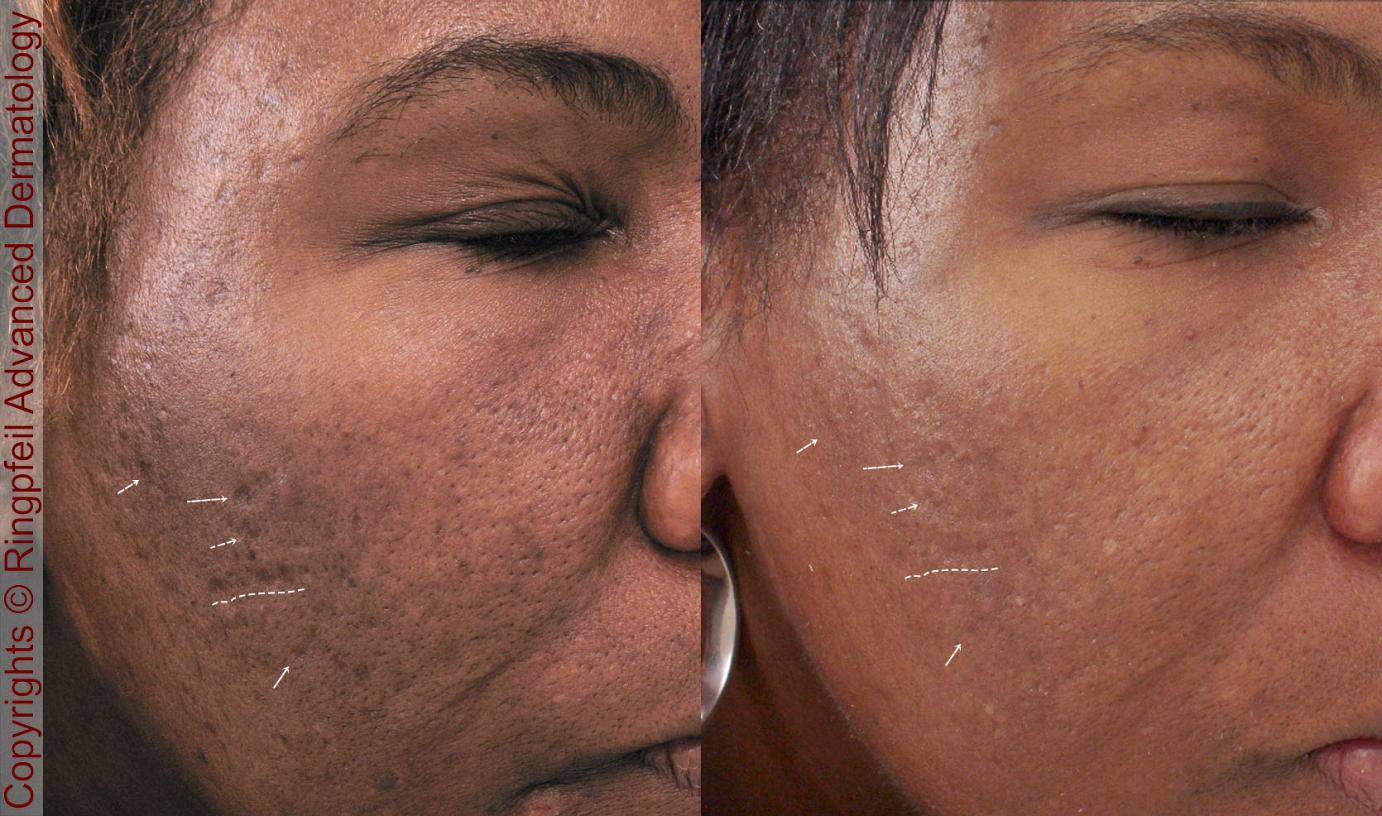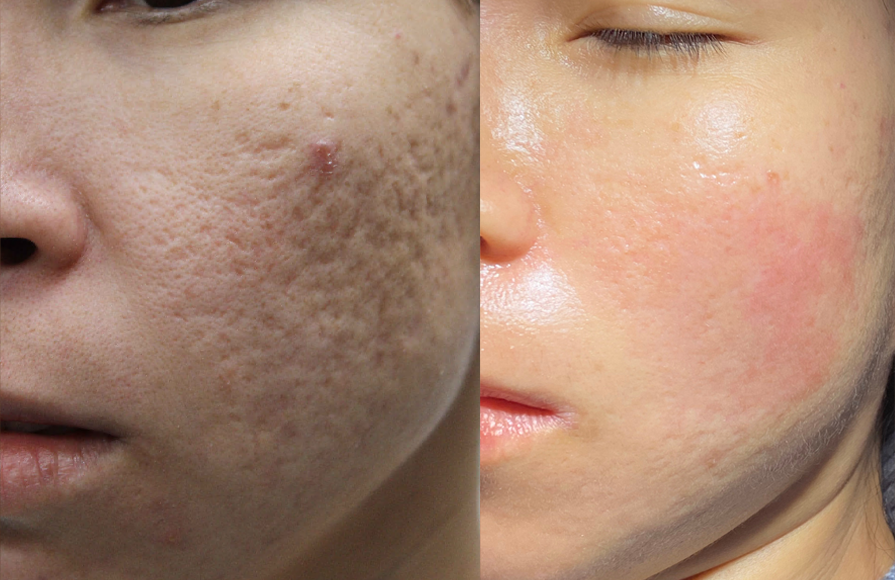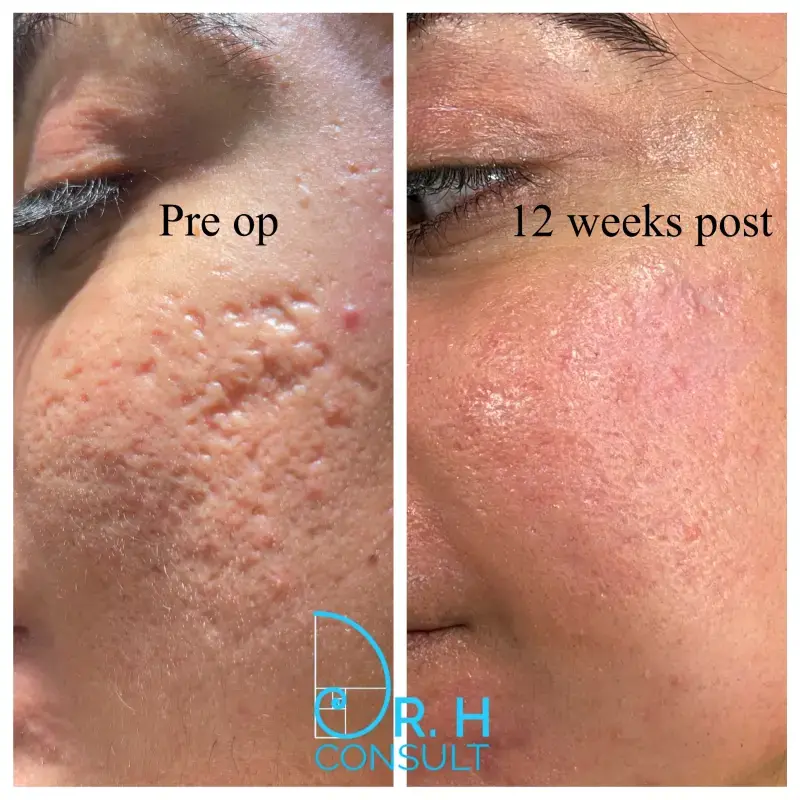Understanding the Various Skin Conditions and Effective Treatment Choices for Acne Marks
Acne marks stand for a complex interplay of skin conditions that substantially impact individuals' self-worth and total skin health and wellness. As we check out the landscape of acne mark monitoring, it comes to be evident that the trip towards more clear skin may involve even more than simply topical remedies.
Sorts Of Acne Marks

In contrast, hypertrophic marks arise from an overflow of collagen throughout the recovery process, resulting in raised locations on the skin. These scars are frequently solid and can differ in shade, often appearing red or darker than the bordering skin.
Comprehending these kinds of acne marks is critical for establishing an effective therapy plan - acne scars. Options might consist of chemical peels, laser treatment, microneedling, or dermal fillers, customized to the particular mark kind. An extensive consultation with a skin specialist can help establish one of the most appropriate intervention, thinking about the individual's skin kind, mark seriousness, and overall skin wellness
Sources Of Acne Scarring
Scarring happens as an outcome of the body's all-natural healing reaction to swelling and injury caused by acne lesions. When acne types, it sets off an inflammatory reaction, resulting in the launch of numerous cytokines and growth elements that promote healing. This procedure can occasionally lead to excessive tissue development or inadequate repair service, resulting in scars.
The key causes of acne scarring include the severity of the acne itself, duration of the sores, and specific skin types. Extreme inflammatory acne, such as blemishes and cysts, is extra likely to result in scarring as a result of much deeper cells damage. Additionally, incorrect handling of acne sores, such as pressing or selecting, can aggravate tissue injury and inflammation, raising the probability of scarring.
Genetic predisposition also plays a considerable function; people with a family members background of scarring go to a greater threat. In addition, skin kind and shade can influence mark formation, as darker skin tones may experience post-inflammatory hyperpigmentation, while lighter skin may develop atrophic scars.
Ultimately, recognizing these reasons is crucial in handling acne and mitigating the possibility for scarring.

Therapy Choices for Scarring
Efficient therapy choices for acne scarring differ relying on the type and severity of the marks. Generally classified into atrophic, hypertrophic, and keloid marks, these problems call for customized methods for optimal outcomes.
For atrophic marks, which are identified by a loss of tissue, treatments such as chemical peels, microdermabrasion, and laser treatment are generally used. These approaches advertise skin revival and stimulate collagen production, thereby improving skin structure. Subcision, a minimally invasive treatment, can also work by separating coarse bands under the skin.
Keloid and hypertrophic scars can be much more testing to treat. Choices include corticosteroid shots to lower swelling pop over to this web-site and squash the scars. In many cases, cryotherapy or laser therapy might be advised to lessen their look.
Surgical options are readily available for severe scarring, where excision or skin grafting might be necessary. It's essential for people to seek advice from with a skin specialist to assess their specific scar type and discuss one of the most suitable therapy plan. Combining numerous treatments usually yields the finest results, making certain that each patient's unique skin problem is dealt with efficiently.
Natural Home Remedy and All-natural Solutions
Natural solutions and natural home remedy can provide an obtainable strategy for people seeking to boost the appearance of acne scars (acne and acne scars treatment). Different ingredients located in the home cooking area have actually demonstrated potential advantages in enhancing skin texture and advertising healing

An additional effective alternative is he said lemon juice, which functions as an all-natural exfoliant and can lighten hyperpigmentation. Nevertheless, it ought to be used very carefully, as it might trigger photosensitivity. Oat meal masks are likewise helpful; their gentle peeling can assist remove dead skin cells while comforting irritability.
Essential oils, such as tea tree oil and lavender oil, can further sustain mark healing as a result of their antimicrobial homes. It is crucial to carry out a spot test before applying any type of treatment to make sure there are no negative responses. These natural remedies can be a corresponding strategy in the journey to diminish acne marks.
Stopping Future Scarring
Embracing a positive method to skincare can substantially minimize the danger of creating future acne marks. One of the crucial approaches is to manage acne properly as it occurs. This involves using non-comedogenic skincare products and drugs recommended by dermatologists that target acne without irritating the skin. Normal cleansing, exfoliation, and hydration can assist maintain skin health and avoid clogged up pores.
Furthermore, staying clear of the lure to choose or press acne sores is crucial, as this can cause swelling and subsequent scarring. Instead, people need to concentrate on using topical treatments that promote recovery and reduce inflammation. Ingredients such as salicylic official statement acid, benzoyl peroxide, and retinoids are recognized for their efficacy in handling acne and minimizing marks.
Sun security is an additional crucial part; exposure to UV rays can dim scars and hamper healing. Making use of a broad-spectrum sunscreen daily can reduce these results.
Lastly, preserving a healthy and balanced diet rich in anti-oxidants and remaining moisturized assistances skin regeneration. By executing these precautionary measures, individuals can substantially reduce their danger of future scarring and promote total skin health and wellness.
Final Thought
Finally, a thorough understanding of acne marks, incorporating both atrophic and hypertrophic kinds, is essential for effective treatment methods. Customized interventions, consisting of specialist treatments and natural remedy, can dramatically enhance skin look and texture. Preventive measures also play a crucial role in minimizing future scarring. Assessment with a skin doctor continues to be necessary to devise tailored techniques that think about private skin kinds and scar intensity, eventually enhancing the efficacy of mark administration techniques.
Acne scars stand for a complex interplay of skin conditions that considerably influence individuals' self-confidence and general skin health and wellness. The two primary groups of acne scars are hypertrophic and atrophic marks. These marks are additional categorized right into three subtypes: ice pick scars, which are deep and narrow; boxcar marks, which are bigger and have well-defined edges; and rolling scars, which develop a wave-like look due to uneven skin structure.
A thorough appointment with a dermatologist can aid determine the most suitable intervention, taking into account the person's skin kind, scar severity, and overall skin health.
Consultation with a dermatologist remains essential to develop personalized techniques that consider specific skin types and mark severity, eventually improving the efficacy of mark administration techniques.